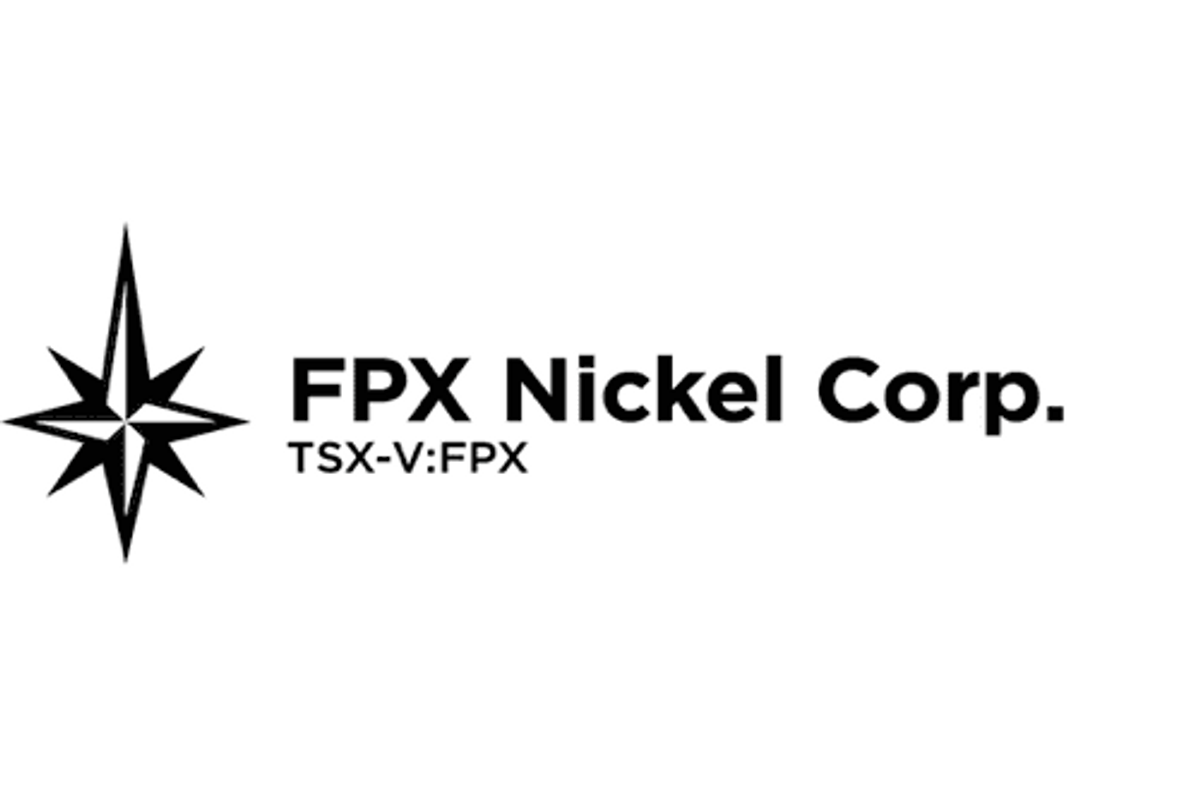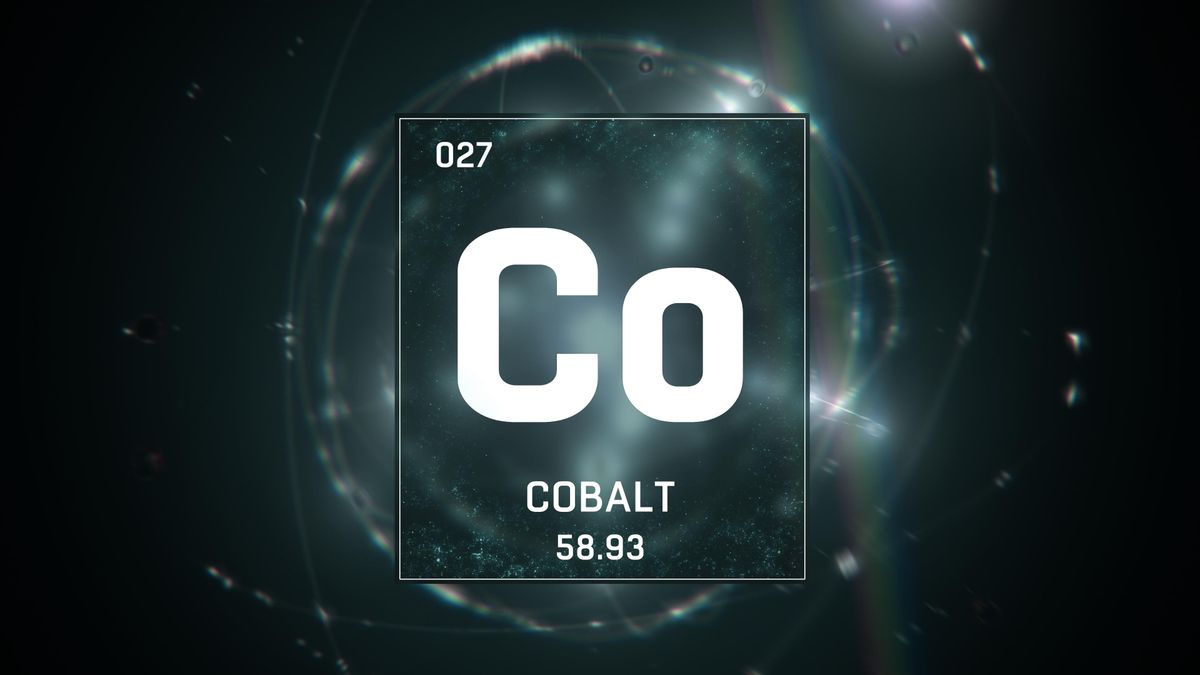FPX Nickel Corp. (TSXV: FPX) (" FPX " or the " Company ") is pleased to report the results of new testing which demonstrates the potential for enhanced carbon capture and storage ( "CCS" ) in tailings and waste rock at its Baptiste Project (the "Project") in the Decar Nickel District in central British Columbia. These laboratory tests, conducted by researchers from the University of British Columbia ( "UBC" ) funded by FPX and the Government of Canada demonstrate that the injection of carbon dioxide ( "CO 2 " ) as simulated flue gas (10% CO 2 ) can be expected to increase the ability of Baptiste tailings and waste rock to sequester CO 2 into a permanent mineralized form, thereby boosting the Project's potential to become the nickel industry's first carbon-neutral or carbon-negative operation.
Highlights
- The positive results of these CO 2 injection tests are complementary to the positive results of the direct air-capture tests described in the Company's February 16 and June 9, 2021 news releases, and present an additional manner of engineering CO 2 mineralization in Baptiste tailings and waste rock
- Consistent rates of carbon mineralization were achieved in all tests, ranging from 13.3 to 15.3 grams of CO 2 sequestered for each kilogram of crushed Baptiste tailings with tests varying between 8 to 18 days in length, and subjected to direct injection of 10% CO 2 gas under a variety of conditions of gas flux and permeability
- Significant rates of carbon mineralization were noted on a continuous basis in all tests, with rates typically peaking on the first day and declining over the course of the test
- The CO 2 mineralization achieved during the tests is both permanent and verifiable by two independent measurement methods
- FPX to host live webinar on Wednesday, November 3 rd at 12:00 pm Eastern (registration available at https://www.renmarkfinancial.com/live-registration/renmark-virtual-non-deal-roadshow-tsx-v-fpx-2021-11-03-120000 )
Cautionary Statement: The test results described herein are preliminary in nature and may not be representative of conditions or results in an operating environment, particularly as it pertains to the representativeness of mineralization, moisture content, changes in weather conditions, process water chemistry and tailings emplacement configuration, including the rate at which tailings are covered with fresh material, among other parameters. There is no certainty that the results reported herein will be realized in an operating environment. Further studies are recommended to expand the scale of testing to better understand the potential for carbon sequestration to be realized in an operating environment.
"FPX is very proud to be playing a leading role in applying fundamental science to evaluate the potential for large-scale permanent carbon capture and storage in the mining industry," commented Martin Turenne , FPX's President and CEO. "With previous lab and field tests having demonstrated the capacity of our Baptiste tailings to sequester significant amounts of CO 2 from direct air capture, these new results enhance the ability to accelerate the rate of carbon mineralization when injecting the material with CO 2 gas. This opens up the possibility of even larger-scale CCS at the Project, further raising the potential for development of a carbon-neutral or carbon-negative nickel mining operation at Baptiste. It is important to note that the 2020 Baptiste preliminary economic assessment did not include the benefit of any potential carbon sequestration; going forward, we will be examining the incorporation of this potential into the ultimate design plan for the Project."
These laboratory tests build on more than a decade of research on technologies that maximize the reaction between CO 2 and brucite (a highly CO 2 -reactive mineral form of magnesium hydroxide) present in the Baptiste mine tailings. In a natural process called carbon mineralization, CO 2 reacts with brucite, and to a much less extent with serpentine minerals, in the tailings and waste rock, binding the CO 2 in a benign, solid magnesium carbonate which is stable on a geological time scale.
Previous laboratory and field tests conducted by UBC researchers has confirmed the ability of Baptiste tailings material to mineralize CO 2 when exposed to air (see the Company's news releases dated February 16 and June 9 , 2021). The primary rate-limiting factor on the pace and amount of carbon sequestration is the delivery of CO 2 to the carbon-reactive minerals (principally brucite) in the tailings. Carbon mineralization rates and magnitude can be enhanced by increasing the supply rate of CO 2 via the injection of concentrated CO 2 sources, such as diesel flue gas, into the tailings material.
The laboratory-scale tests summarized herein were designed by UBC to assess the effects of grain size and permeability, among other variables, on the sequestration potential of Baptiste material. Injection experiments were prepared by using a combination of coarse- and fine-grained material in pipes which were injected with simulated flue gas containing 10% CO 2 over periods ranging from 8 to 18 days. The experiments were conducted on Baptiste drill core pulps in batches weighing 0.5 to 1.9 kilograms, with brucite content of the fine-grained material of 12.8%, as compared to the estimated 1.5% average brucite content of the Baptiste deposit.
In nine tests conducted during this round of research, the coarse material (P 80 3,500µm) and fine-grained material (P 80 250 µm) were combined at a 3:1 ratio of coarse to fine, thereby enhancing both (a) permeability (with the coarse material allowing circulation of CO 2 within the tailings); and (b) reactivity (with the fine material presenting a greater surface of liberated brucite to increase the reaction with the CO 2 ).
The key findings of the experiment are as follows:
- Consistent rates of carbon mineralization were achieved in all tests, ranging from 13.3 to 15.3 grams of CO 2 sequestered for each kilogram of crushed Baptiste tailings with tests varying between 8 to 18 days in length and subjected to direct injection of 10% CO 2 gas under a variety of conditions of gas flux and permeability
- Significant rates of carbon mineralization were noted on a continuous basis in all tests, with rates typically peaking on the first day and declining over the course of the test
- Over 50% of the CO 2 was mineralized in the first 2-to-4 days based on measurements of CO 2 concentrations at the inlet and the outlet
- The CO 2 mineralization achieved during the tests is both permanent and verifiable by two independent measurement methods (see note on Verification Methodology below)
The positive findings of this experiment provide the basis for additional testing to expand the understanding and optimization of several key parameters affecting carbon mineralization in tailings, including the impacts of scale, grain size, porosity, permeability, moisture content, temperature, CO 2 concentration in the injected gas, and reactivity over longer time periods. Future test work will underpin the Company's efforts to optimize these parameters in the Baptiste development plan, including the potential to utilize some combination of direct air capture and CO 2 injection to advance Baptiste as the nickel industry's first carbon-neutral or carbon-negative operation. These results also open the possibility of mineralizing CO 2 ex-situ in waste rock, or in-situ by injection of CO 2 into brucite-rich portions of the host rocks throughout the Decar Nickel District.
Verification Methodology
Two methodologies were employed to confirm the amount of carbon sequestered during the test program. Samples of the test material were submitted for analysis of total inorganic carbon ( "TIC" ) at the beginning and the end of the experiments, with the increase in TIC representing the amount of CO 2 captured during the experiment. A mass balance on the sequestered CO 2 was also determined on a daily basis by subtracting the effluent mass of CO 2 from the injected mass. Comparison of total captured CO 2 shows good agreement between the mass balance and TIC measurement methodologies and provides greater assurance regarding the measured rate of carbon capture and the use of TIC as a verification method.
Next Steps
As previously disclosed, the Company is expanding the size and scope of carbon sequestration testing, with the recent initiation of two direct air capture experiments in the third quarter of 2021:
- Six-month experiment at a location in Vancouver on approximately 2.4 tonnes of tailings material, or approximately eight times the scale of the 2020 experiment (see the Company's news release dated June 9, 2021 ).
- 1-year experiment at a location in central British Columbia on approximately 300 kg of tailings material, designed to better understanding the longer-term carbon sequestration potential of undisturbed tailings in the Project region.
The Company will report the results of these experiments upon the conclusion of testing in 2022.
Dr. Peter Bradshaw , P. Eng., FPX's Qualified Person under NI 43-101, has reviewed and approved the technical content of this news release.
Webcast
The Company is pleased to report that it will be participating in Renmark Financial Communications Inc.'s live Virtual Non-Deal Roadshow Series to provide a Company overview and discuss its future plans on Wednesday, November 3 rd at 12:00 pm Eastern time ( 9:00 am Pacific time ). FPX welcomes stakeholders, investors, and other individual followers to register and attend this live event using the following registration link: https://www.renmarkfinancial.com/live-registration/renmark-virtual-non-deal-roadshow-tsx-v-fpx-2021-11-03-120000
About the Decar Nickel District
The Company's Decar Nickel District claims cover 245 km 2 of the Mount Sidney Williams ultramafic/ophiolite complex, 90 km northwest of Fort St. James in central British Columbia . The District is a two-hour drive from Fort St. James on a high-speed logging road.
Decar hosts a greenfield discovery of nickel mineralization in the form of a naturally occurring nickel-iron alloy called awaruite (Ni 3 Fe), which is amenable to bulk-tonnage, open-pit mining. Awaruite mineralization has been identified in four target areas within this ophiolite complex, being the Baptiste Deposit, and the B, Sid and Van targets, as confirmed by drilling in the first three plus petrographic examination, electron probe analyses and outcrop sampling on all four. Since 2010, approximately US $24 million has been spent on the exploration and development of Decar.
Of the four targets in the Decar Nickel District, the Baptiste Deposit, which was initially the most accessible and had the biggest known surface footprint, has been the focus of diamond drilling since 2010, with a total of 82 holes and over 31,000 metres of drilling completed. The Sid target was tested with two holes in 2010 and the B target had a single hole drilled in 2011; all three holes intersected nickel-iron alloy mineralization over wide intervals with DTR nickel grades comparable to the Baptiste Deposit. The Van target was not drill-tested at that time as rock exposure was very poor prior to more recent logging activity.
As reported in the current NI 43-101 resource estimate, having an effective date of September 9, 2020 , the Baptiste Deposit contains 1.996 billion tonnes of indicated resources at an average grade of 0.122% DTR nickel, containing 2.4 million tonnes of nickel, plus 593 million tonnes of inferred resources with an average grade of 0.114% DTR nickel, containing 0.7 million tonnes of nickel, both reported at a cut-off grade of 0.06% DTR nickel. Mineral resources are not mineral reserves and do not have demonstrated economic viability.
About FPX Nickel Corp.
FPX Nickel Corp. is focused on the exploration and development of the Decar Nickel District, located in central British Columbia , and other occurrences of the same unique style of naturally occurring nickel-iron alloy mineralization known as awaruite.
On behalf of FPX Nickel Corp.
"Martin Turenne"
Martin Turenne , President, CEO and Director
Forward-Looking Statements
Certain of the statements made and information contained herein is considered "forward-looking information" within the meaning of applicable Canadian securities laws. These statements address future events and conditions and so involve inherent risks and uncertainties, as disclosed in the Company's periodic filings with Canadian securities regulators. Actual results could differ from those currently projected. The Company does not assume the obligation to update any forward-looking statement.
Neither the TSX Venture Exchange nor its Regulation Services Provider accepts responsibility for the adequacy or accuracy of this release.
SOURCE FPX Nickel Corp.

![]() View original content to download multimedia: https://www.newswire.ca/en/releases/archive/November2021/02/c4233.html
View original content to download multimedia: https://www.newswire.ca/en/releases/archive/November2021/02/c4233.html







